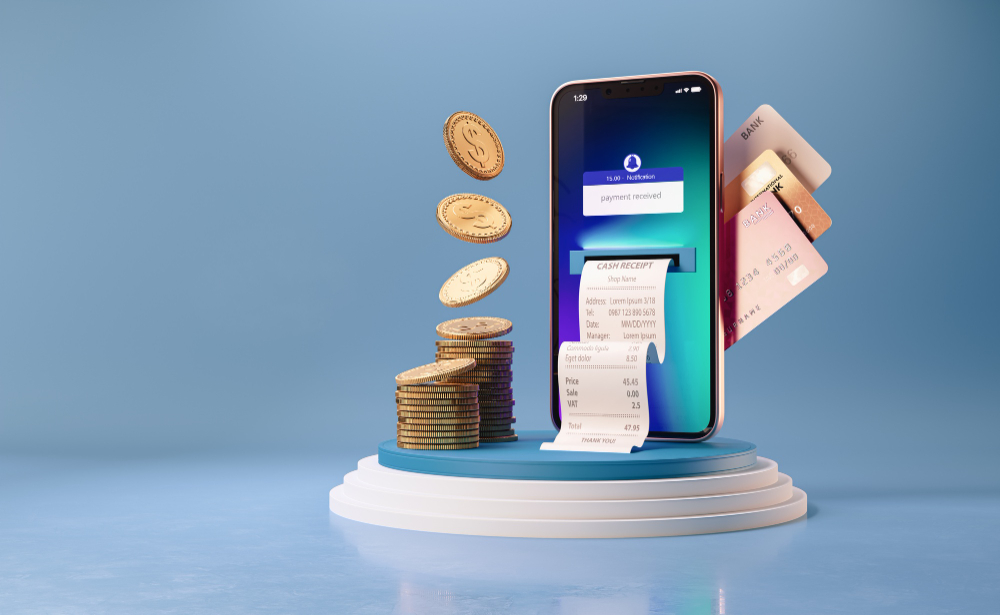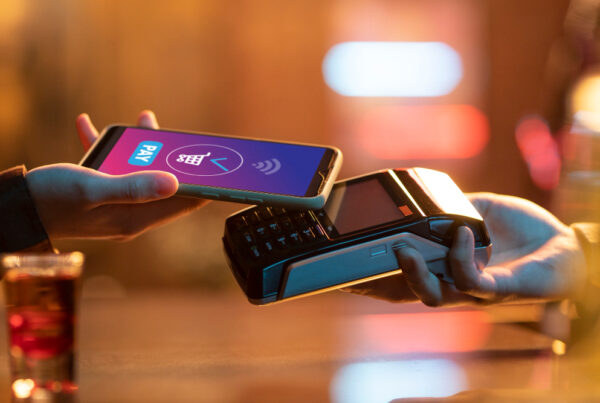In this digital age, the financial landscape is continually evolving, providing users with innovative solutions to manage their finances on the go. Two terms that often dominate discussions are “Mobile Money” and “Mobile Banking.” As we delve into the intricacies of these financial services, we aim to demystify their functionalities and highlight the key distinctions. Join us on this enlightening journey to understand the nuances of mobile money and how it differs from mobile banking.
I. Decoding Mobile Money
What is Mobile Money?
Mobile money refers to a revolutionary financial service that enables users to conduct various financial transactions using their mobile phones. From transferring money to paying bills, purchasing goods and services, and even accessing credit, mobile money provides a comprehensive suite of financial services at the fingertips of users. The backbone of this service is a secure digital wallet linked to the user’s mobile number.
How Does Mobile Money Work?
At its core, mobile money operates through a secure platform that facilitates transactions between users, merchants, and financial institutions. Users can load funds into their mobile wallets through various channels, including bank transfers, cash deposits, or even through other mobile money users. Once the funds are in the digital wallet, users can seamlessly engage in a myriad of financial activities, making it a versatile and convenient tool for everyday transactions.
Key Features of Mobile Money
- Accessibility: Mobile money transcends geographical barriers, enabling financial inclusion for remote areas where traditional banking services may be limited.
- Security: Advanced encryption and authentication measures ensure the safety of transactions, giving users peace of mind when managing their finances.
- Convenience: Mobile money allows users to conduct transactions at their convenience, breaking free from the confines of traditional banking hours and physical branches.
- Versatility: From person-to-person transfers to bill payments and retail transactions, mobile money offers a broad range of services catering to diverse financial needs.
II. Unveiling Mobile Banking
What is Mobile Banking?
While mobile money focuses on providing a comprehensive set of financial services, mobile banking primarily centers around enabling users to access and manage their traditional bank accounts through mobile devices. It acts as an extension of traditional banking, leveraging the convenience of mobile technology to enhance the banking experience.
How Does Mobile Banking Work?
Mobile banking applications are typically provided by traditional banks, allowing users to log in securely and access a range of banking services. These services may include checking account balances, transferring funds between accounts, paying bills, and even applying for loans or credit cards. Mobile banking harnesses the power of digital technology to streamline traditional banking processes, providing users with a user-friendly and efficient platform.
Key Features of Mobile Banking
- Account Management: Users have the ability to check their account balances, review transaction histories, and oversee different facets of their accounts conveniently through their mobile devices.
- Transaction Capabilities: Mobile banking empowers users to effortlessly move funds between accounts, make bill payments, and set up recurring payments through a simple interface on their screens.
- Security Measures: Similar to mobile money, mobile banking places a high emphasis on security, employing strong encryption and authentication measures to protect both user data and transactions.
- Integration with Traditional Banking Services: Mobile banking seamlessly integrates with traditional banking services, providing users with a unified and streamlined financial management experience.
III. Contrasting Mobile Money and Mobile Banking
The User Experience
- Mobile Money Experience:
- Intuitive Transactions: Mobile money focuses on simplifying transactions, ensuring that users can easily navigate through the various financial activities.
- Financial Inclusion: Its widespread accessibility empowers users who may not have easy access to traditional banking services.
- Mobile Banking Experience:
- Account Management: Mobile banking prioritizes providing users with a holistic view of their traditional bank accounts, fostering better financial control.
- Traditional Banking Services: While offering convenience, mobile banking primarily extends the functionality of traditional banking services to mobile devices.
Transaction Types
- Mobile Money Transactions:
- Peer-to-Peer (P2P) Transfers: Mobile money excels in facilitating quick and secure person-to-person transactions.
- Merchant Payments: Users can seamlessly make payments at participating merchants using their mobile money wallets.
- Mobile Banking Transactions:
- Account Management: Mobile banking is tailored for customer onboarding, transferring funds between accounts, managing loans, and card services, whether within the same bank or across different financial institutions.
- Bill Payments: Users can pay bills, including utilities and credit cards, directly through their mobile banking applications.
Accessibility and Inclusion
- Mobile Money:
- Geographical Inclusivity: Mobile money’s accessibility extends to areas where traditional banking infrastructure may be lacking.
- Reduced Barriers: It reduces barriers to entry, enabling individuals without bank accounts to participate in the formal financial system.
- Mobile Banking:
- Bank Account Dependency: Mobile banking relies on users having traditional bank accounts, limiting its reach to individuals already integrated into the banking system.
- Urban-Centric Focus: It tends to cater more to urban areas where traditional banking infrastructure is prevalent.
Security Protocols
- Mobile Money Security:
- Digital Wallet Encryption: The focus is on securing the digital wallet, implementing robust encryption to protect user funds.
- Authentication Measures: Users typically undergo multi-factor authentication for secure access to mobile money services.
- Mobile Banking Security:
- User Account Protection: Security measures center around safeguarding traditional bank accounts linked to the mobile banking application.
- Secure Login Procedures: Users go through secure login processes, including PINs, passwords, and biometric authentication.
Future Trends and Innovations
- Mobile Money Evolution:
- Blockchain Integration: Some mobile money services explore blockchain technology to enhance security and transparency.
- Cross-Border Transactions: Continued efforts to facilitate cross-border mobile money transactions for a seamless global financial ecosystem.
- Mobile Banking Advancements:
- AI Integration: Mobile banking applications may increasingly incorporate artificial intelligence for personalized financial insights and recommendations.
- Open Banking Initiatives: The integration of open banking principles, fostering collaboration between traditional banks and innovative fintech solutions.
Conclusion
In the ever-evolving landscape of digital finance, both mobile money and mobile banking play pivotal roles in shaping the future of how individuals manage their finances. Mobile money, with its emphasis on inclusivity and versatile transactions, caters to a broader audience, including those traditionally excluded from formal financial systems. On the other hand, mobile banking seamlessly integrates with existing banking services, offering a familiar yet enhanced user experience.
As we navigate the dynamic intersection of mobile money and mobile banking, users are presented with a spectrum of choices that cater to their diverse needs. Whether it’s the accessibility and simplicity of mobile money or the integrated capabilities of mobile banking, the overarching goal remains to empower users with the tools they need to take control of their financial destinies. Embrace the future of finance, where the power to manage wealth is literally in the palm of your hand.
FAQ:
Q. What is the primary difference between Mobile Money and Mobile Banking?
A. Mobile Money is a digital wallet service, while Mobile Banking involves using a bank’s services through a mobile device.
Q. How does Mobile Money work compared to Mobile Banking?
A. Mobile Money operates independently of traditional banks, allowing users to store, send, and receive money using their mobile phones. Mobile Banking involves accessing a range of banking services through a mobile app or browser.
Q. What are the key advantages of using Mobile Money over Mobile Banking?
A. Mobile Money offers financial services to the unbanked population, while Mobile Banking provides a more comprehensive suite of services for individuals with existing bank accounts.
Q. Can I link my bank account to Mobile Money or Mobile Banking?
A. Mobile Money is often standalone, while Mobile Banking typically requires linking to a traditional bank account.
Q. Which is more widely accepted globally, Mobile Money or Mobile Banking?
A. Mobile Banking is often more widely accepted globally due to its integration with established banking systems, but Mobile Money is gaining popularity in regions with limited access to traditional banking.
Q. Are there security concerns with using Mobile Money or Mobile Banking?
A. Both Mobile Money and Mobile Banking implement security measures, but users should be aware of potential risks such as phishing and unauthorized access.






